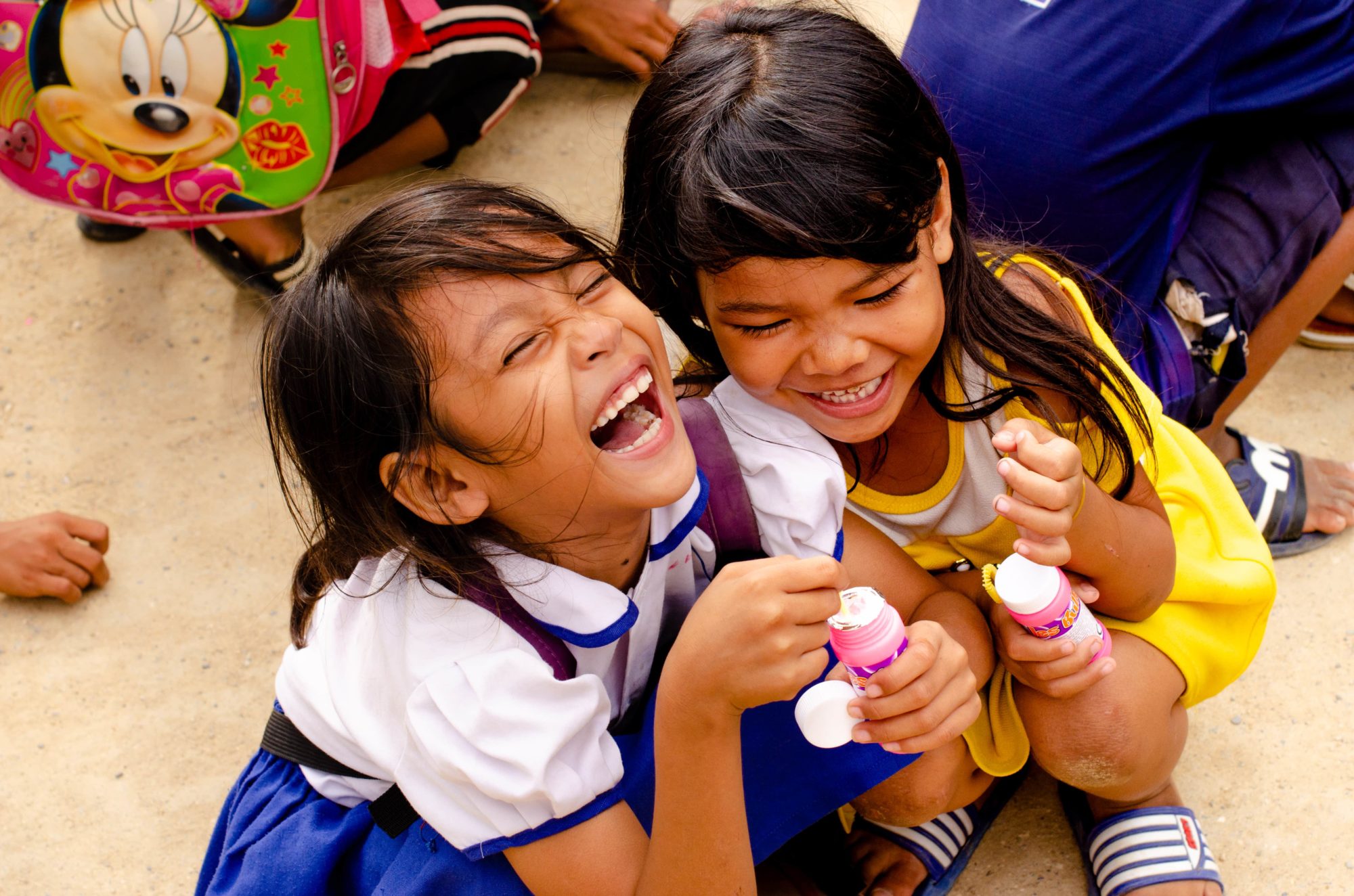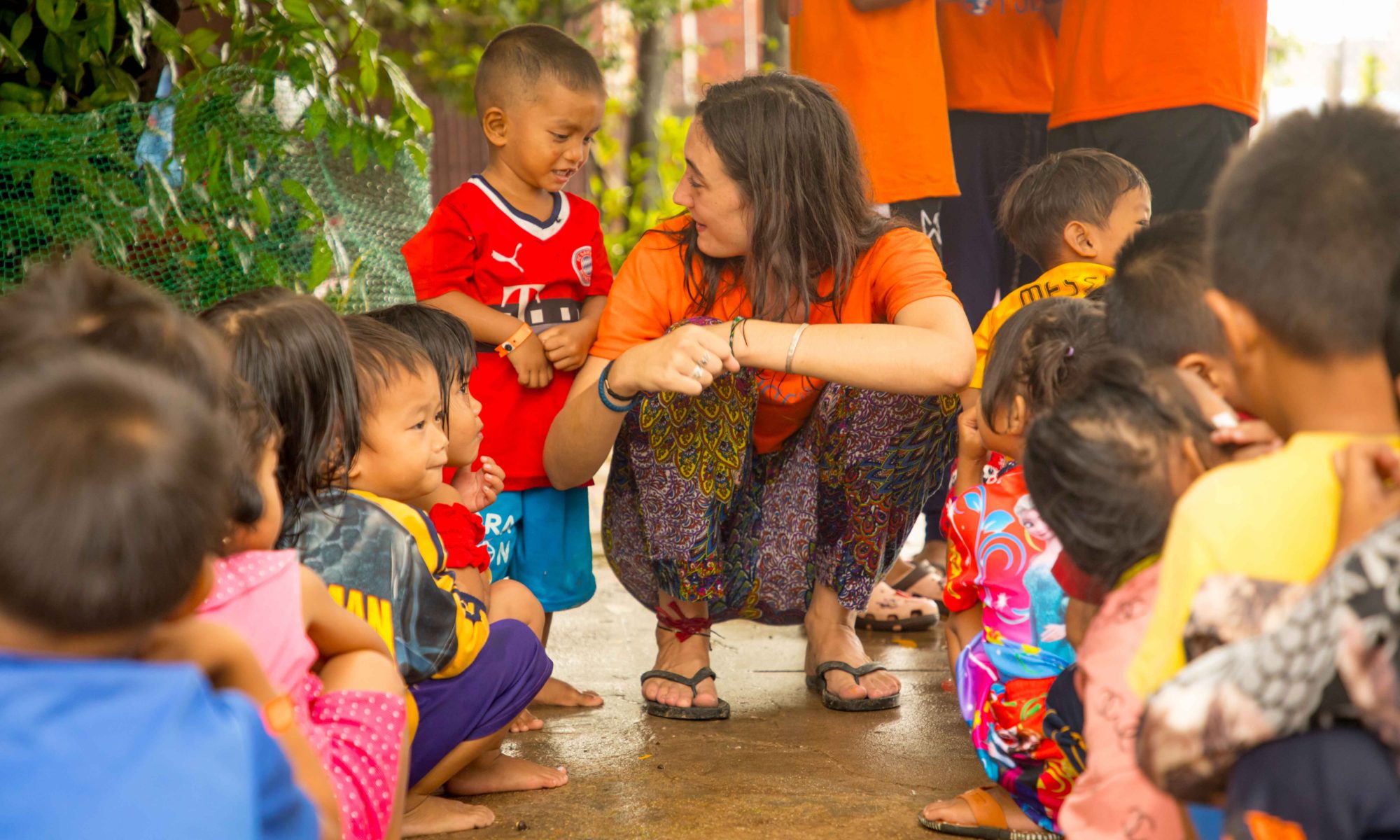Along the railway and in front of a practically deserted train station, 15 minutes drive away from Central Sihanoukville and in a middle of a sad, grey and extremely poor environment, there is a very small colorful school where the Sihanouk Paillote Summer Program takes place. Every morning 16 monitors and their raincoats get off the white and blue bus of PSE, ready to dance and sing for the children they will welcome all day long.
Every morning 16 monitors and their raincoats get off the white and blue bus of PSE.
As in many paillotes, children are already waiting for them when they arrive and smiles lighten their faces when they see the volunteers getting off the bus. There is no cook here and the cook from Central Sihanoukville cannot prepare the breakfast that early in the day so the kids get a very special breakfast every morning made of bread and sardines in a tomato sauce. And right after their shower, kids are literally running to eat this food which changes from the rice they are used to eat. Most of the kids live close to the school explaining why, even if PSE’s bus goes to pick some of them up, they mostly come by foot and it is not rare to see kids arriving at 9am while activities start around 8:30am. “When they live so close from the paillote they think they can come whenever they want so we see them arriving the whole day long” explains Marina the European coordinator of the project. Therefore, the gates are kept open.
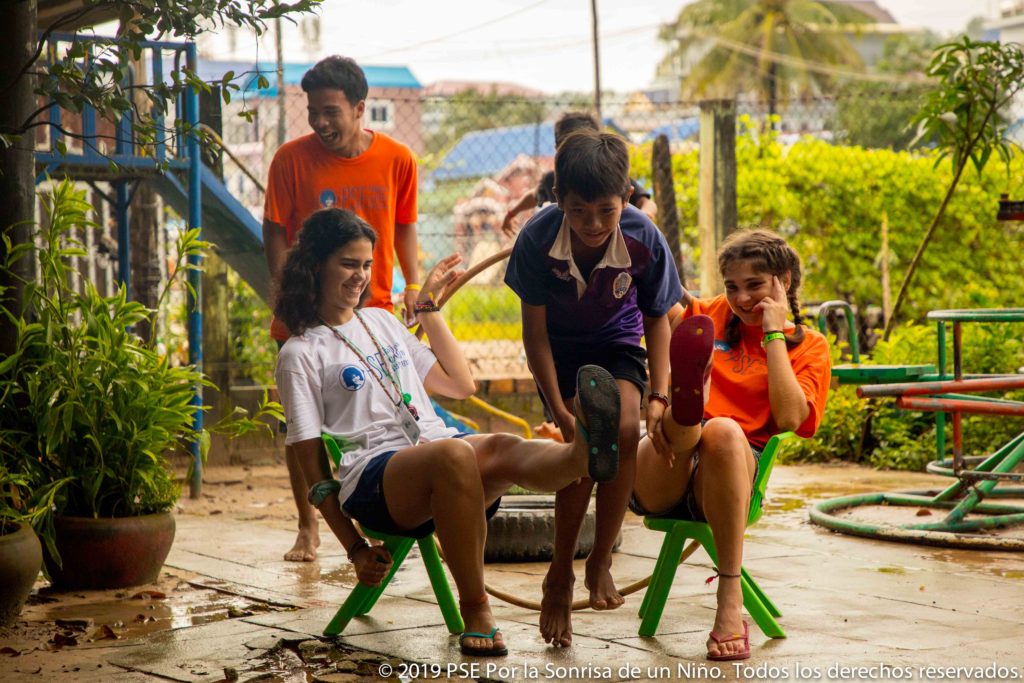
When it’s raining too much, some monitors go for a walk in the neighborhood to encourage the kids who didn’t come in a first place to do so. Between 60 and 100 children are welcomed everyday within the small daycare center and it is touching to see them queuing in front of the school teacher, Nidy, to get registered. She knows them all as she has been teaching here for more than six years and stays during the Summer Program to help. “Here the kids come to not stay alone at home while their parents are working”, she says. Indeed, the children welcomed here are very young, between 2 and 12 years old. While the older are welcomed within the Sihanouk Central program.
Like a giant choregraphed ballet, the dozens of pink, blues, yellow and greens T-shirts of the children get in lines, play, or go to the siesta.
The paillote is like a big wood cabin built on stilts, with the ground floor dedicated to the School Continuity Program. Facilities have been kept simple here, because of the regular floods there is almost no concrete ground or walls – the latter are made of grills on which the light blue T-shirts used for the beach outings are drying. The paillote courtyard resounds of the children’s laughters between the blue slide and the green trees and, despite the rain, the monitors try to organize lots of outdoor games and activities, so the children can run riot and play bigger games. Due to its small size, every corner of the site is exploited and like a giant choregraphed ballet, the dozens of pink, blues, yellow and greens T-shirts of the children get in lines, play, or go to the siesta. From the youngest one to the monitors, here everyone knows what he has to do and things go really smoothly. Yet, the rains requires much more logistic as everything as to be planned twice, in case the outdoors spaces cannot be used. “The first week has been tough because no one knew what to do, neither the Khmer not the European monitors with so many kids to be kept indoor”, tells Marina.
The children are surrounded by ignorance, illiteracy and violence and violence is the sneakiest of these factors as the kids don’t even recognize it.
The atmosphere of the Sihanouk Paillote Program is very specific as the kids are probably among the poorest that PSE takes care of. “I’ve never seen that. They not only are dirty, but they don’t have clothes, or shoes, not even spoiled ones”, says Olivia, European monitor for the second time.
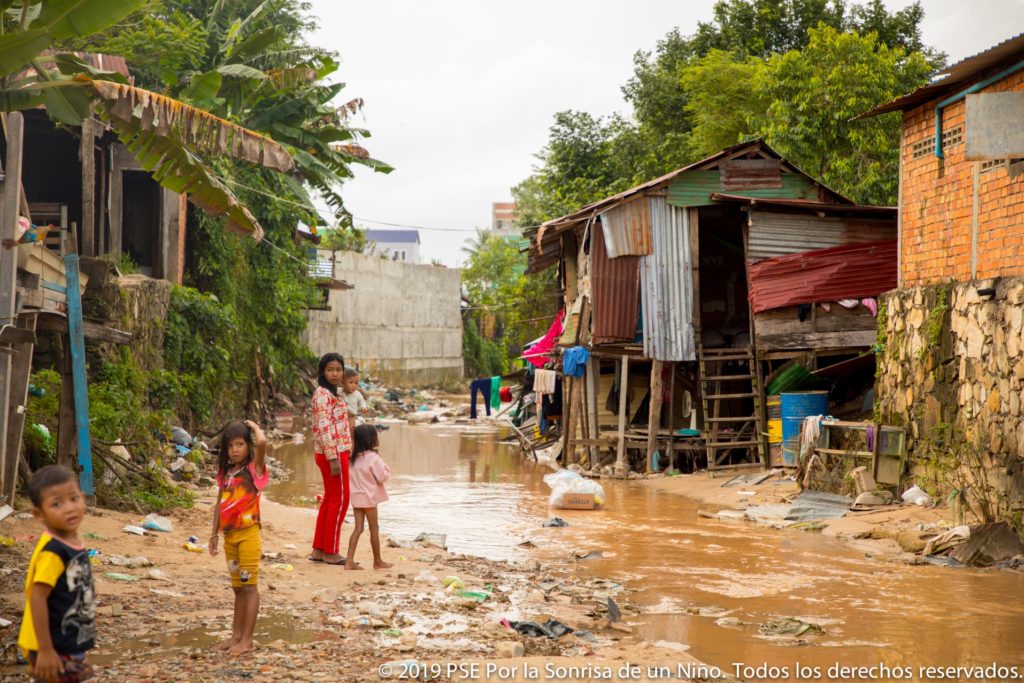
Whether it has been by going to pick them up or when visiting with the Social Team the villages where the children live, only one single observation can be made : the environment in which these kids grow up doesn’t give them any perspective of a decent future. They are surrounded by ignorance, illiteracy and violence, and violence is the sneakiest of these factors as the kids don’t even recognize it : when children are asked if they have already seen any violence they all say no, but when they are asked if they already have been beaten or if they saw someone being beaten, most of them raise their hands to say they did. During three weeks, the weekly workshops about behaviors and emotional intelligence have been dedicated to violence and conflict. These workshops are organized both by the European and the Khmer monitors who were especially involved and willing to help. “One of them cried while listening to one of our kid, because it happened the same to him”, explains Marina. Khmer monitors, as much as the European ones, are role model for the kids and they illustrate the possibility of having a better life so that their cohesion and teamwork are absolutely essential and even more in front of these left-behind-kids.
Raising their eagerness to learn and their global curiosity.
To solve and eradicate violence among the program’s kids, one of the monitors’ means is to raise their eagerness to learn and their global curiosity by keeping some moments in the day dedicated to reading. For example, after breakfast a monitor can be easily found with five or six around him listening very carefully to the story he’s telling them, even if it’s in English! Listening to the tale and watching the images is already a lot to them. They also all gather before lunch and one of the Khmer monitor read for them : it is adorable to see the 70 small faces highly focused on what they are told.

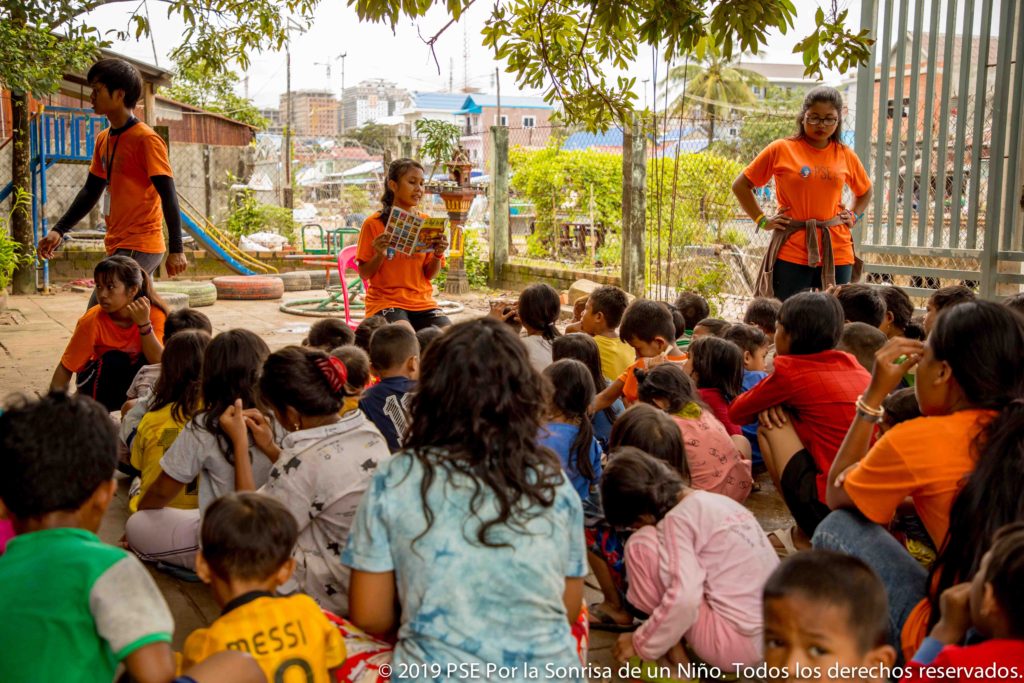
However, even though some children are willing to learn and their parents aware that they have to send them to school, money keeps being the biggest issue for them and as Nidy, the teacher, explains “Even if they can find more money because of the jobs created by the foreigners, they don’t live better because they have to spend more money as everything is more expensive”. Laura, the supervisor of the programs located in Siem Reap and Sihanoukville, also highlights a new kind of problem illustrated with the situation of a 14-years-old girl:“The rice compensation is not enough anymore for the family, when she works she can earn up to 350$ a month on her own so they don’t mind about three kilos of rice, they just want her to earn as much money as possible so they can leave the town and move somewhere else. Education is not their current priority”.
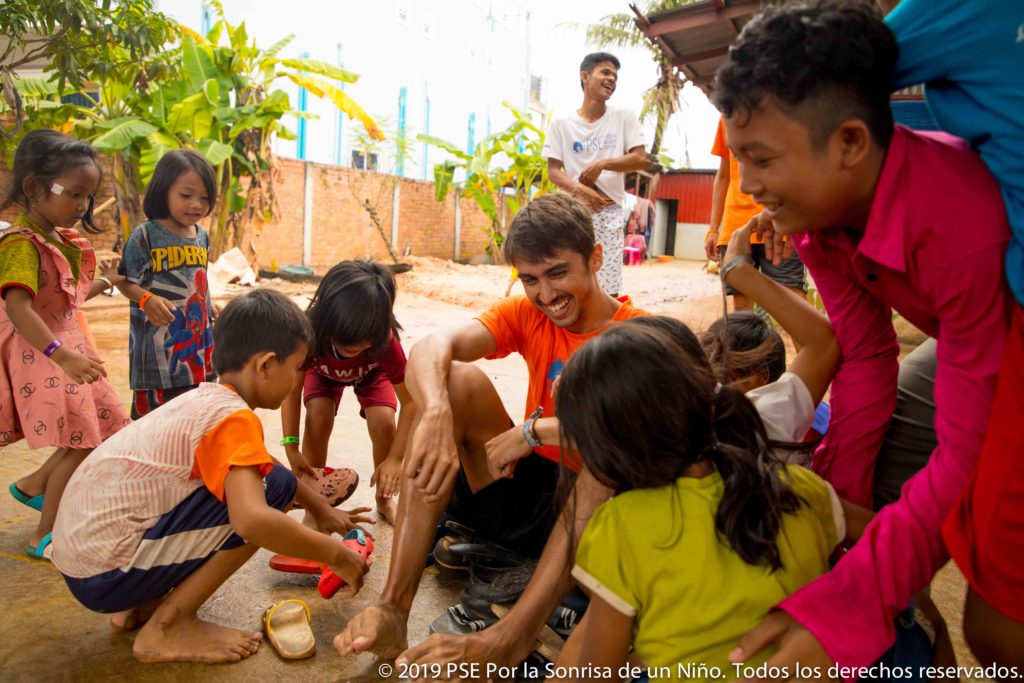
In Sihanoukville Paillote, the children live all together in the same villages and they are friends before coming to the daycare center. Despite their terribly poor life conditions, despite the rain, despite the small size of the paillote, the children form one big family whose smile is huge, a family their monitors fully enter during the month of August under Marina’s caring eye.
